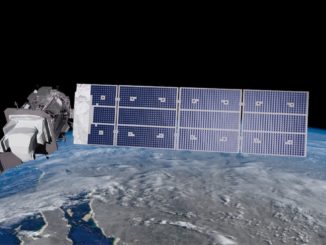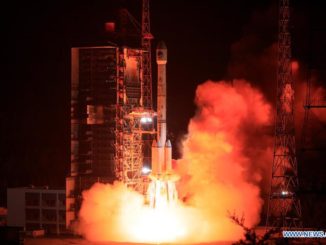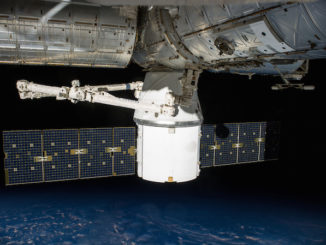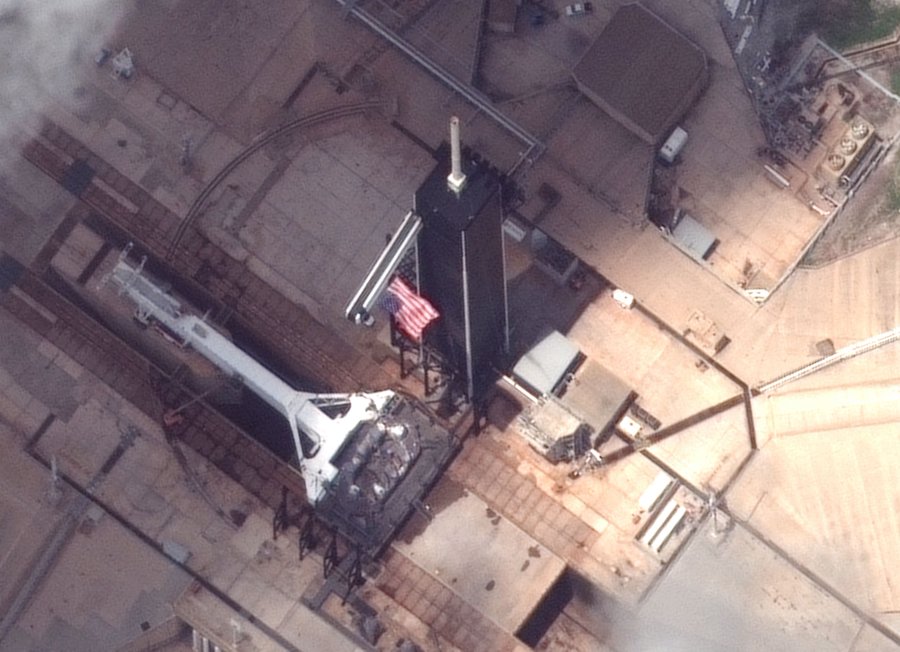
Maxar’s eagle-eyed WorldView 3 satellite captured high-resolution views Monday of NASA’s twin Apollo-era launch pads at the Kennedy Space Center in Florida, both now home to new launch vehicles 50 years after humans took their first steps on the moon.
Launch pad 39A its now leased from NASA by SpaceX for Falcon 9 and Falcon Heavy rocket launches. The commercial space company took over operations at the launch pad in 2014, and began launching missions there on Feb. 19, 2017.
In the photo captured by Maxar’s WorldView 3 satellite Monday, SpaceX’s strongback transporter structure is in the horizontal position at pad 39A, and a U.S. flag is seen waving from the facility’s fixed service structure, a tower originally built for the space shuttle and modified for SpaceX’s use.
The crew access arm at pad 39A is also visible. The swing arm will be used by astronauts boarding SpaceX’s Crew Dragon spacecraft, one of two new commercial spaceships in development under contract with NASA to restore independent access to the International Space Station for U.S. astronauts, without relying on Russia’s Soyuz spacecraft.
WorldView 3 took the pictures of the two launch pads at NASA’s historic Launch Complex 39 from an altitude of roughly 383 miles (617 kilometers). Both launch pads are located less than a half-mile (less than a kilometer) from the beach at the Kennedy Space Center, and were built in the 1960s for the Apollo moon program.
Pad 39A has been the starting point for 112 launches since 1967, including 12 Saturn 5 moon rockets, 82 space shuttle missions, 15 Falcon 9 rockets and three Falcon Heavy flights.
The Apollo 11 mission, which launched 50 years ago July 16, famously departed from pad 39A on the first mission to land astronauts on the moon. Other notable launches from pad 39A include the liftoff of the Skylab space station, the first and last space shuttle flights, and the first launch of the Falcon Heavy, the most powerful commercial launcher ever built.
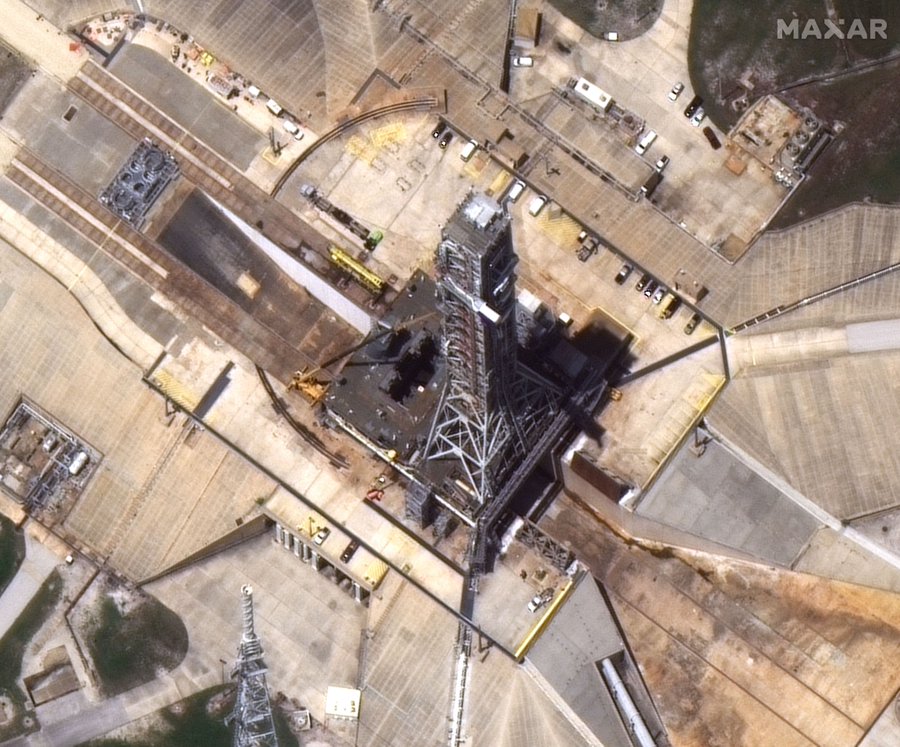
Pad 39B, located about a mile-and-a-half north of pad 39A, has hosted 59 launches since 1969. One Saturn 5 rocket, four Saturn 1B missions, 53 space shuttle flights, and a single suborbital test launch of NASA’s now-cancelled Ares 1 rocket have lifted off from pad 39B.
The most recent launch from pad 39A was June 25, when a Falcon Heavy took off with two dozen satellites. Pad 39B’s most recent launch was the Ares 1X test launch in October 2009.
But pad 39B is seeing more activity as NASA prepares for the first flight of the Space Launch System rocket, set for late 2020 or early 2021.
The mobile launch tower for the Space Launch System rolled out to pad 39B on June 27 to begin a three-month series of checkouts and tests, including sound suppression water testing, liquid hydrogen and liquid oxygen propellant flows, and a full electrical compatibility check with the launch pad.
The mobile platform will carry the 322-foot-tall (98-meter) SLS rocket from NASA’s Vehicle Assembly Building to pad 39B during launch campaigns.
Email the author.
Follow Stephen Clark on Twitter: @StephenClark1.

